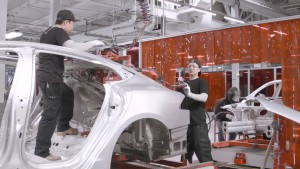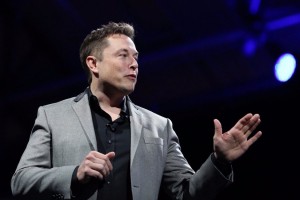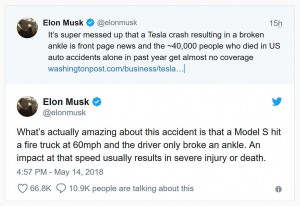Facing increasing problems that have raised concerns about both Tesla’s technology and manufacturing operations, CEO Elon Musk has ordered a shake-up of the company’s management structure.
Tesla continues to struggle to meet production targets for its Model 3 battery-sedan, an issue that led to record first-quarter losses. But the company has also found itself in the news because of a series of serious vehicle crashes, at least some of which appear to have occurred while they were operating in the semi-autonomous Autopilot mode.
While those crashes could raise concerns about the safety of Tesla’s products, the more immediate threat to the company’s viability is lagging Model 3 production at its Fremont, California assembly plant. In a memo sent to employees, Musk noted he was “flattening (the company’s) management structure to improve communications,” while shifting away from “activities that are not vital to the success of our mission.”
Musk has repeatedly scaled back Tesla’s production schedule, something he recently referred to as a “time shift.” By the end of the first quarter, Tesla was barely rolling out 2,000 Model 3 sedans a week, well short of its 2,500 vehicle goal. But the ever-optimistic CEO subsequently promised investors and potential buyers that the target was to hit 6,000 a week by the end of the second quarter and then push towards a long-term goal of 10,000.
(NTSB opens second Tesla investigation after Florida crash kills two teens. Click Here for the story.)

Despite a variety of adjustments and new technology, Tesla is still behind on its Model 3 production schedule.
Despite ongoing financial problems, investors have largely lent Tesla their support, its stock rebounding after an initial hit when first-quarter losses were announced. But there’s been a growing push by short-sellers and some traditional supporters have begun asking more troubling questions – many now expecting Tesla to have to raise new capital despite Musk’s claim that it has enough cash in hand to get through 2018 without a new stock offering.
Complicating Tesla’s problems, however, have been reports of a series of recent crashes that have resulted in several deaths and injuries. In one instance, a Model X operating in Autopilot mode crashed into a California freeway barrier, killing the driver. Two teens were later killed, a third injured, in a Florida crash in which their Model S sedan’s battery pack caught fire after a crash.
The most recent incident took place in Utah last Friday, a 28-year-old woman’s Model S ramming into the back of a fire truck at a high rate of speed. The driver, who suffered only a broken ankle, told police that she had activated Autopilot before the crash occurred.
(Click Here for more about Musk looking beyond Model 3 problems, but creating some headache in the process.)
The National Transportation Safety Board has already launched probes of the California and Florida crashes. It is unclear if it will now investigate the Utah incident, as well. The NTSB previously criticized Autopilot for playing a role in a fatal, 2016 crash. Tesla subsequently modified both the hardware and software used by the semi-autonomous system.
Musk has taken some heat for recent comments, including tweets appearing to criticize the driver killed in the California incident who reportedly failed to retake control of his vehicle after Autopilot issued a warning ahead of the crash. He also came under fire for comments made during an earnings call in which he dismissed several questions from analysts that he dismissed as “boring.”
The South African-born executive again took to Twitter in response to coverage of the Utah crash. He described news reports as “super messed up” because Tesla accidents, including one that just resulted in a broken ankle, are garnering headlines. Accidents that last year resulted in 40,000 U.S. deaths, he added “get almost no coverage.”
(For more on Tesla’s first-quarter earnings, Click Here.)
During his earnings conference call, Musk insisted that by focusing on problems with autonomous technology, reporters could lead motorists to shut systems like Autopilot off “and die.”



We shall see if he survives the flattening…
That is good he wants to build 10K units a week but does Fremont have the capacity and more importantly does the vehicle buying pool have that capacity?
“…a model S hit a fire truck at 60mph and the driver only broke an ankle. An impact at that speed usually results in severe injury or death.” My understanding has been that, with the numerous safety devices on so many new and newer cars these days, it really isn’t all that unusual to have drivers and/or passengers unhurt following a severe accident. They just don’t get the media coverage either. Have I been wrong in that assumption?
Nope, you’re not.